
The Phillips Collection's Art-Filled Weekend in Phoenix
March 6-9, 2003
The Four Seasons Golf Resort at Troon North was our base of operations for the weekend.

The view from our casita was quite picturesque
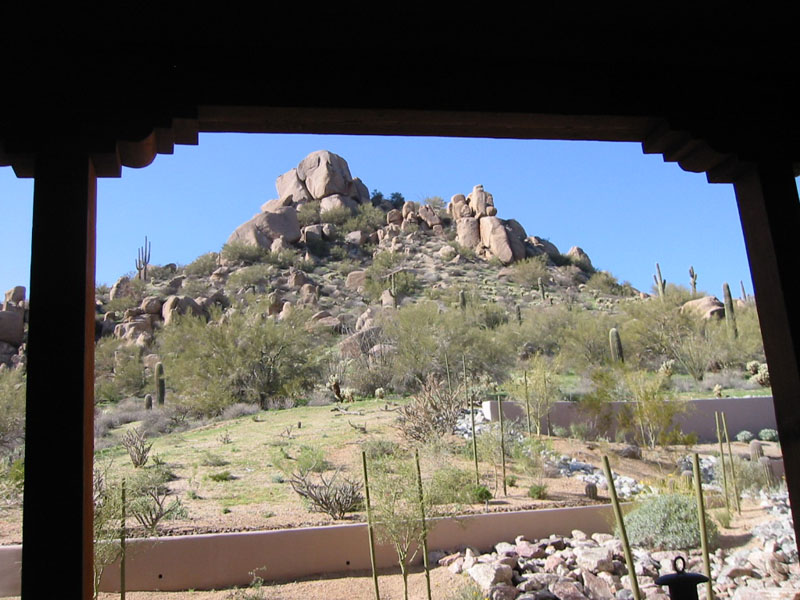
as was the walk to dinner
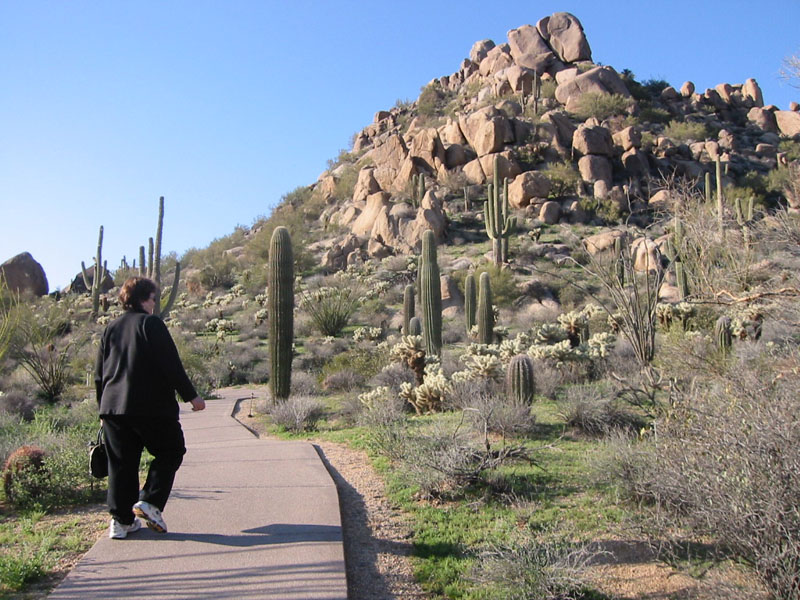
on the terrace, which overlooked Pinnacle Peak.

George Vradenburg welcomed us on behalf of the Phillips Collection.

After dinner, when the sun had set,

we visited downtown Scottsdale's ArtWalk
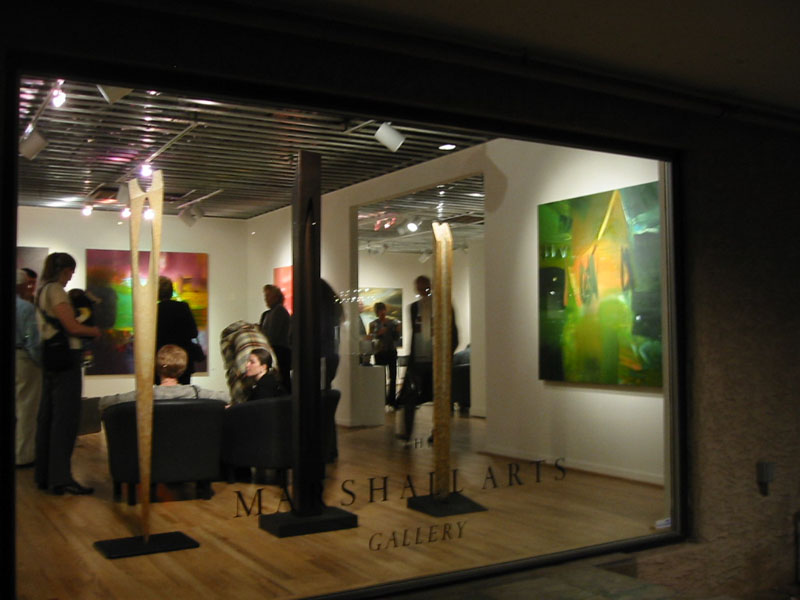
where every Thursday evening
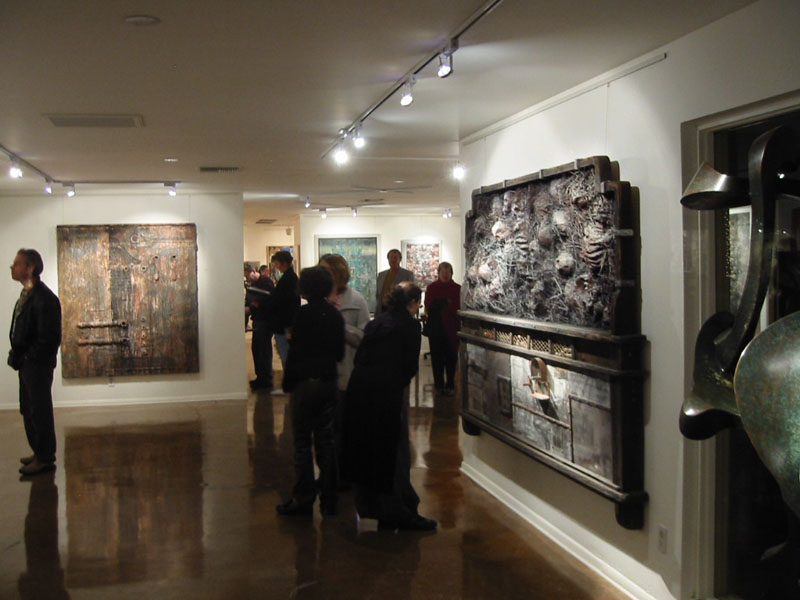
dozens of galleries along Main Street
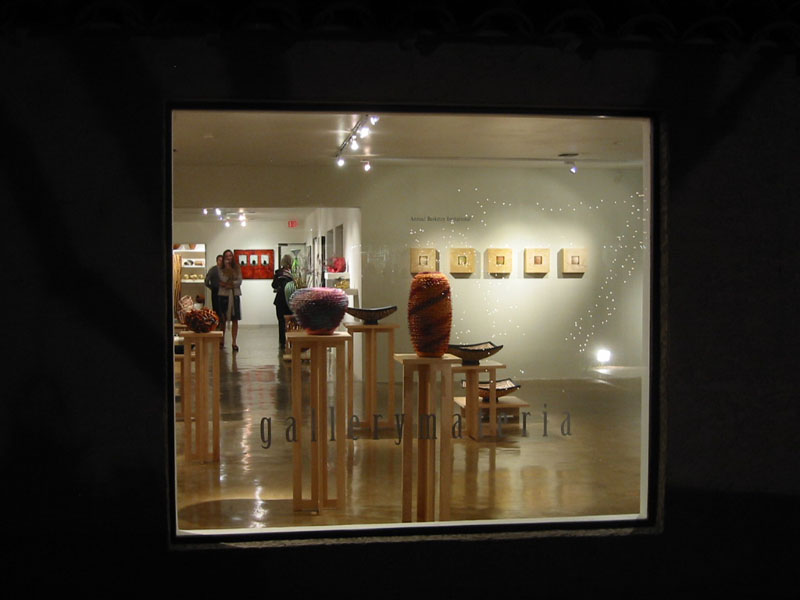
are open to display their works of art.
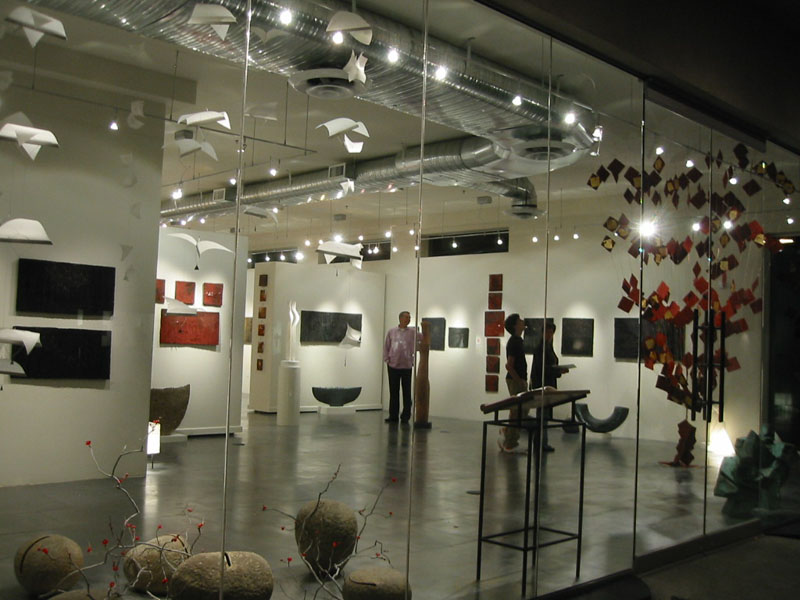
Jazz combos

and string quartets serenaded us along the street.
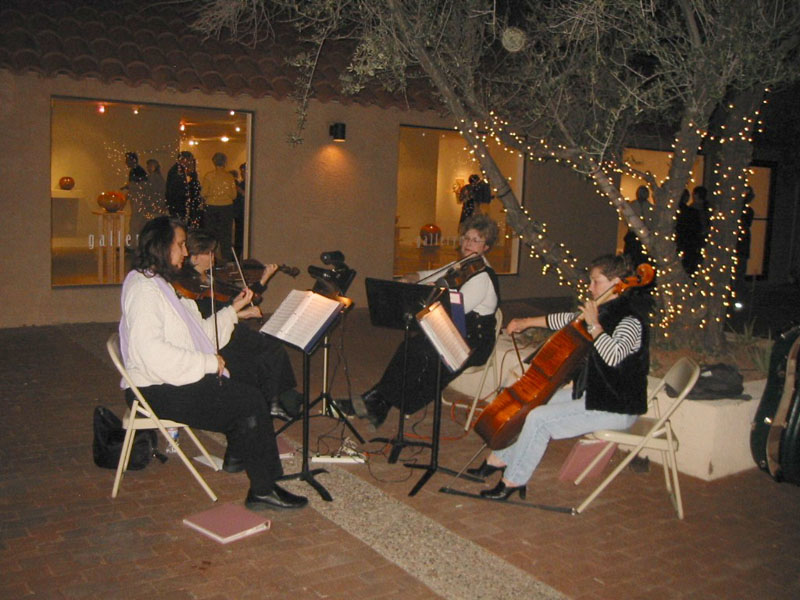
Phoenix's artistically-decorated animal is, of course, the horse.
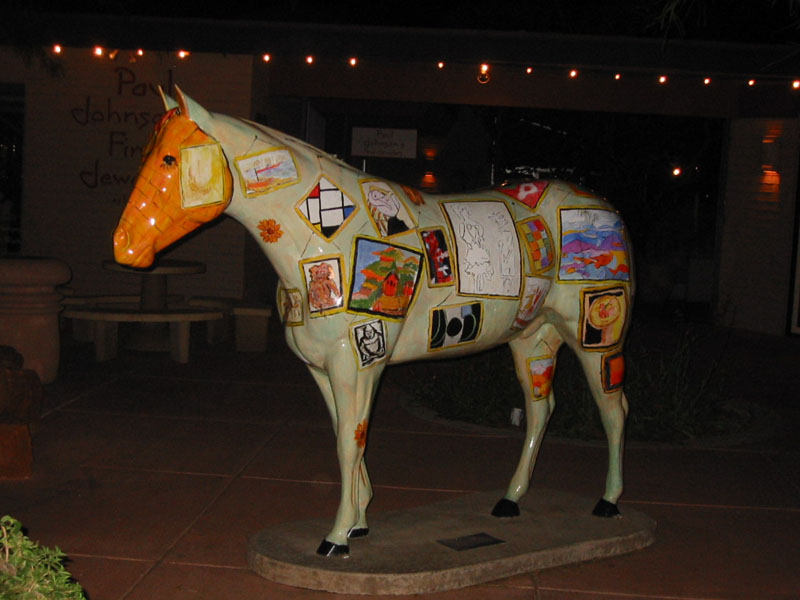
Mark, as usual, kept things moving smoothly. (No, he was not our driver.)

Friday morning we returned to Scottsdale, to the Camelback Mountain area (the camel was reclining during our visit)

where we first visited the home of Dennis and Janice Lyon. Dennis is a Trustee of the Phoenix Art Museum, and a long-time collector of art, pottery, and furniture from the Southwest; primarily Arizona
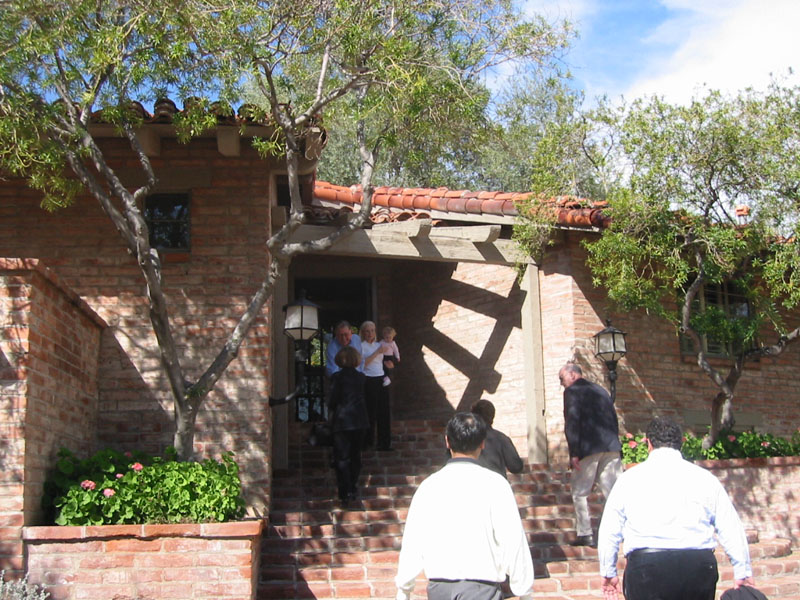
but also Colonial Mexico and New Mexico. Among his favorites is a striking buffalo-face katchina doll, which the previous owner would not sell. Fortunately, he would trade for one of Dennis's particularly desirable pots.

We enjoyed a refreshing break in the spacious courtyard.
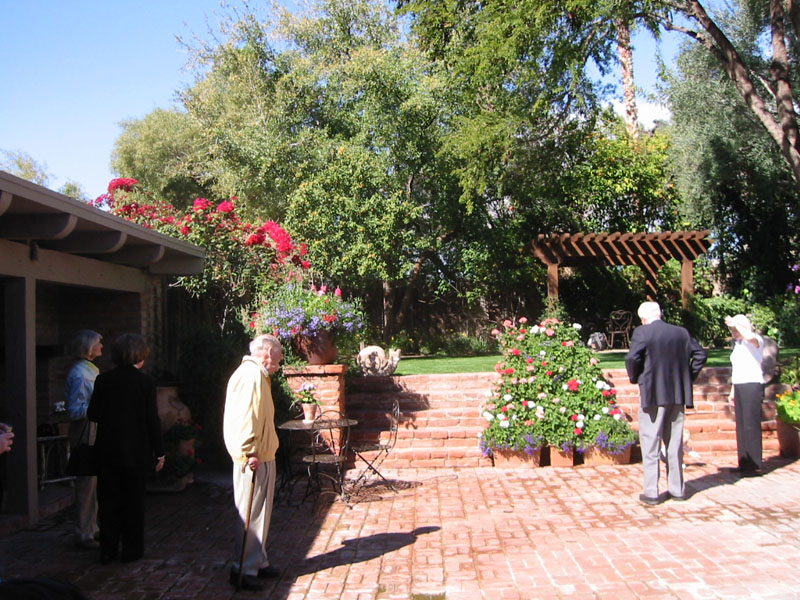
Across the street we spotted a llama-looking cactus. The holes are a result of birds burrowing in to create relatively cool nests.

Our next stop was at the home of Michael and Heather Greenbaum. Michael is former President of the Board of the Phoenix Art Museum.
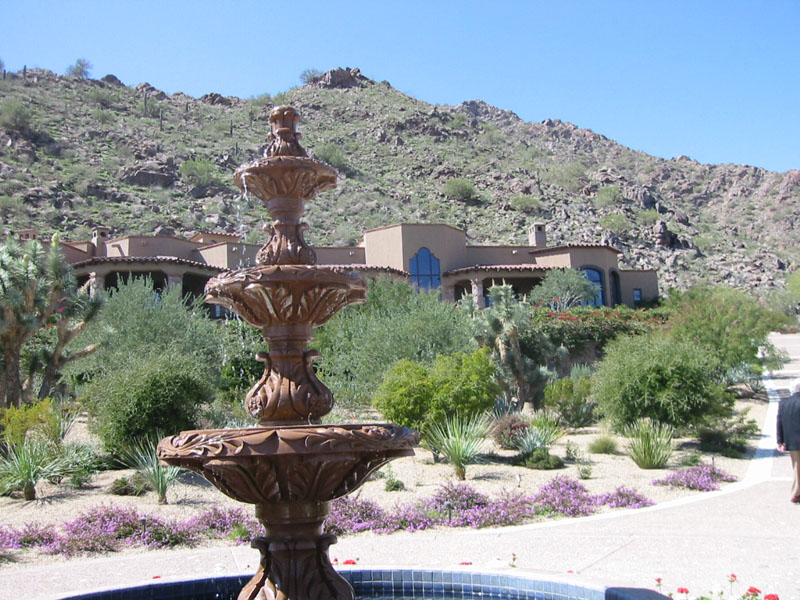
Although the Greenbaums have a wide variety of art works, from Impressionist paintings to more recent sculptures,
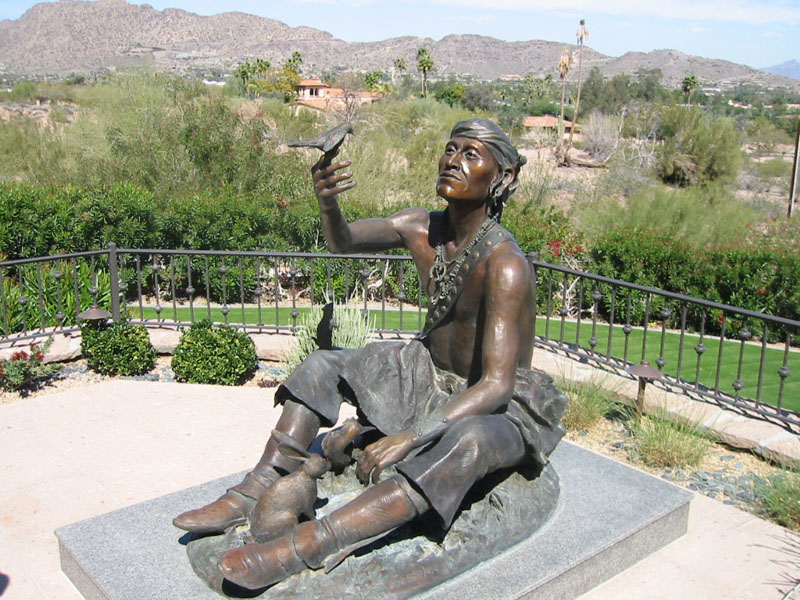
the highlight is their collection of Remington sculptures—Michael is author of Icons of the West: Frederic Remington's Sculpture .
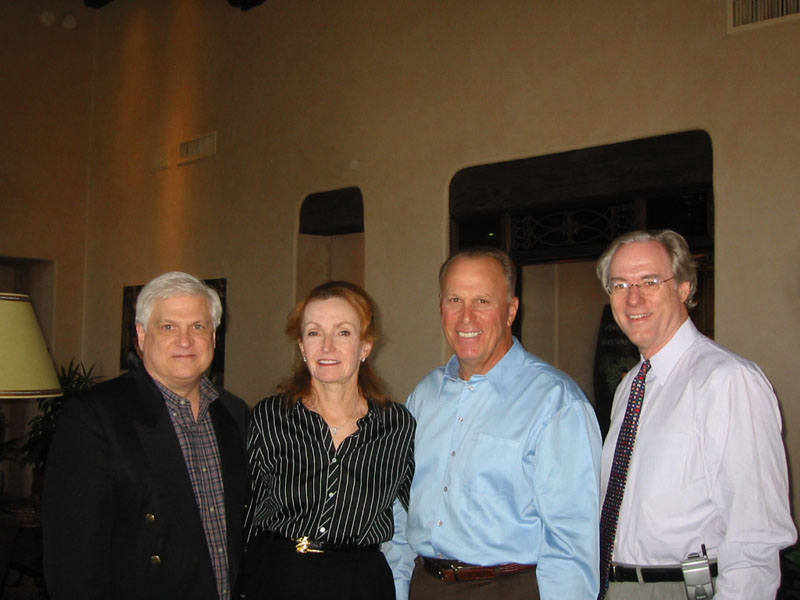
Although the temperature was already climbing into the 80's during the day, snow still crowned the mountains fifty miles to the east.
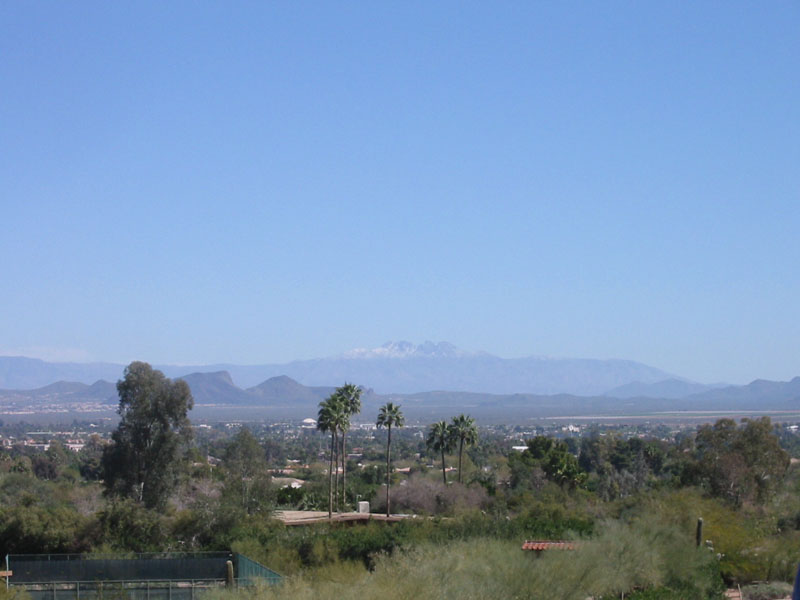
That evening we enjoyed cocktails on the Sunset Terrace

and a private tour of Taliesin West (we ignored this sign),

Frank Lloyd Wright's winter home, studio,

and architectural laboratory from 1937 until his death in 1959.
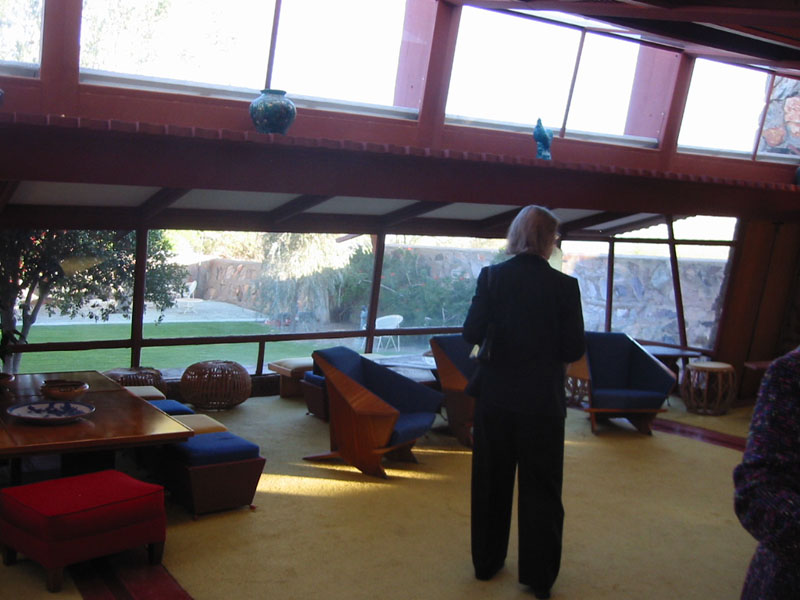
Frank Lloyd Wright's winter home, studio,

Of course, the furniture is also his own design. Unlike many of his pieces, this chair was not uncomfortable, although the sloping armrests were non-functional.

The apprentices' "bedrooms" were tents, to be close to nature. In fact, there were no bedrooms for 20 years, until Mrs. Wright finally insisted on construction of this sleeping wing.
At 5' 8-1/2", Wright considered corridors much higher than 6' to be wasted space.
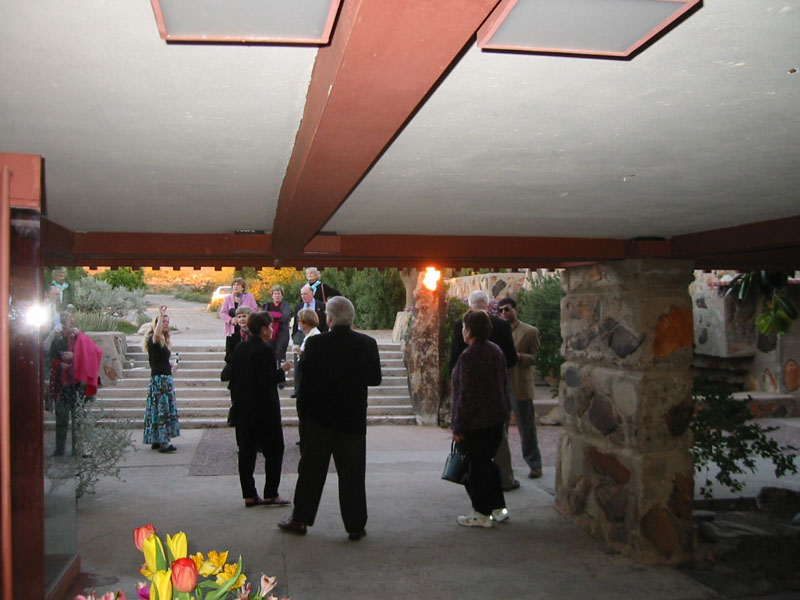
A fire-breathing dragon helped illuminate our way in the gathering darkness.

To assure that apprentices acquired the appropriate social graces to interact with clients, there were weekly formal dinners and regular musical and theatrical performances in the Cabaret.
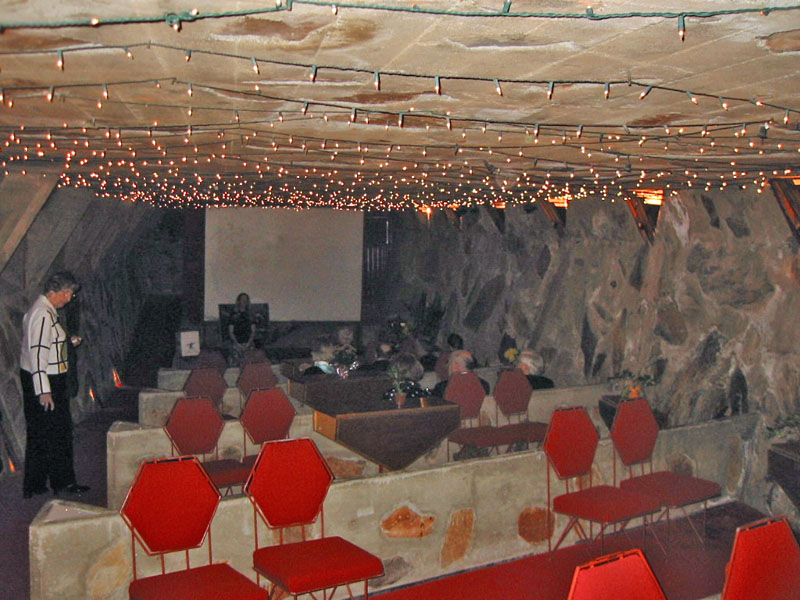
Our departure from the bus for that evening's dinner, still on the grounds of Taliesin West, was among the trees.

The dinner was at the home of James and Ann Goulka. James is CEO and President of the Frank Lloyd Wright Foundation.
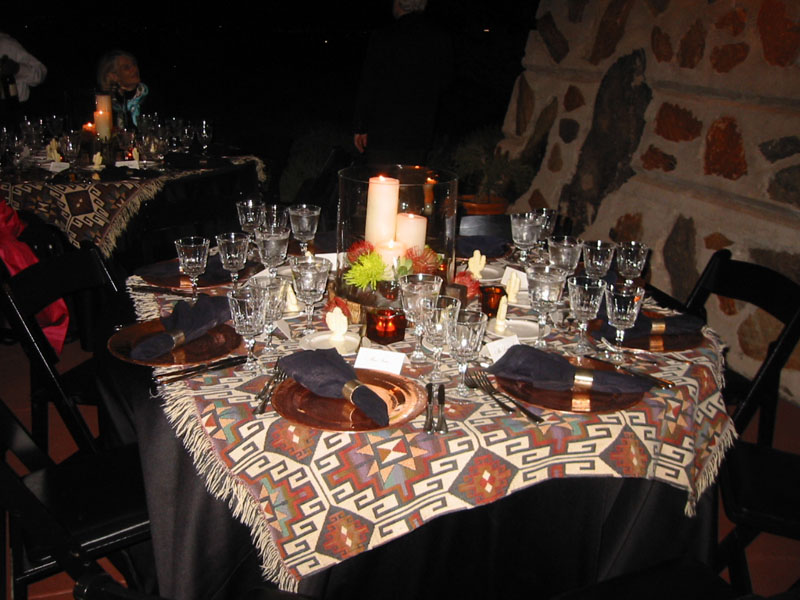



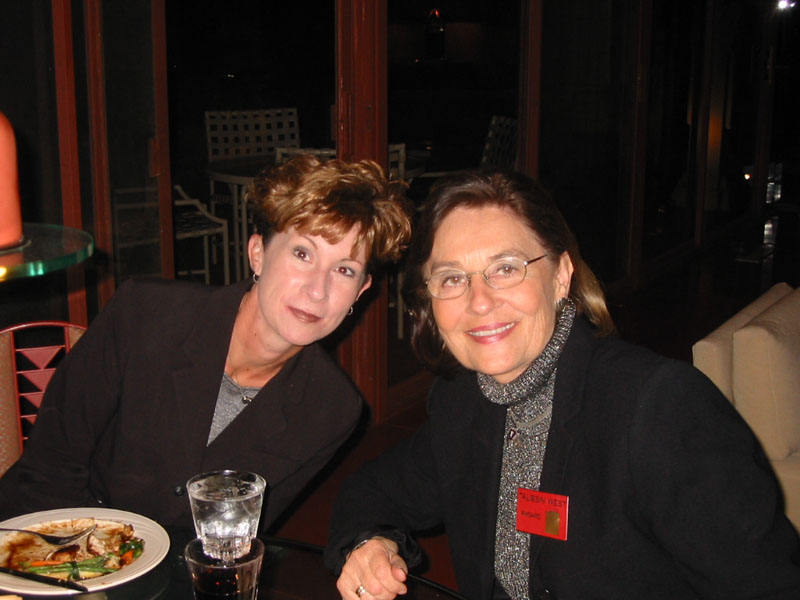



Saturday morning we saw a familiar image outside the Phoenix Art Museum.
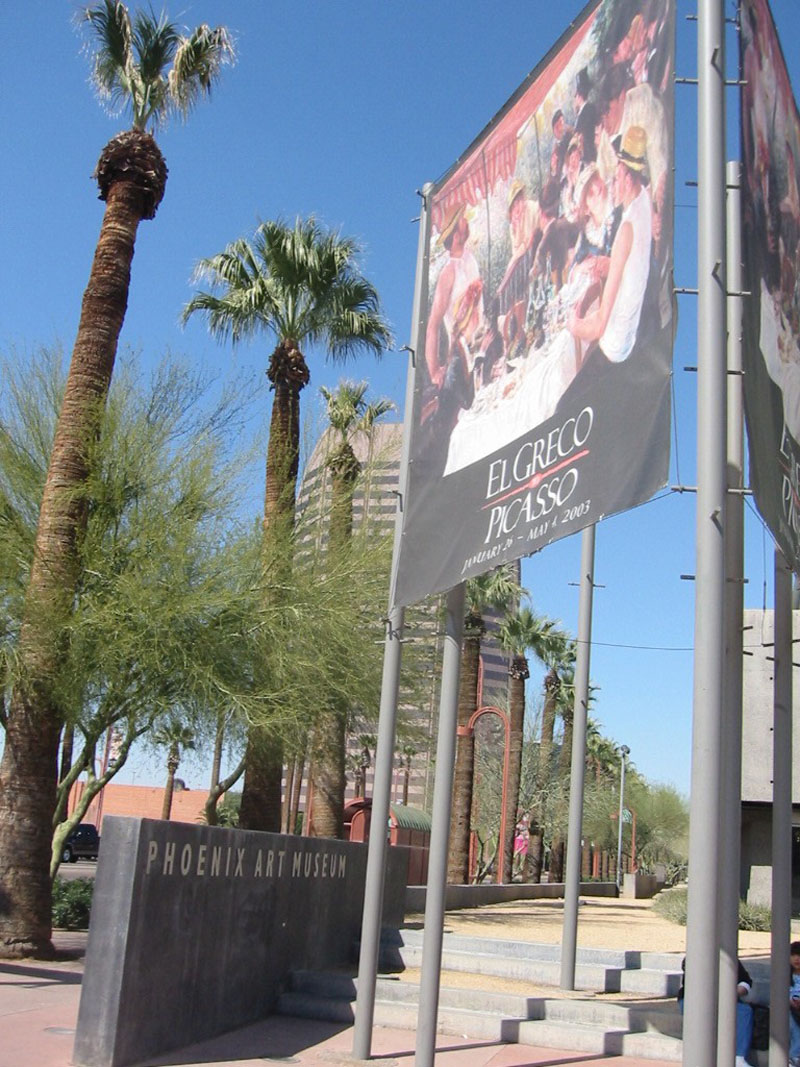
Phoenix art fans lined up all day for timed entry to view the Phillips' treasures. The museum's collection includes American, Asian, European, Latin American, Modern and Contemporary, and, of course, Western American, art. There is also a fascinating series of miniature rooms of historic interiors.
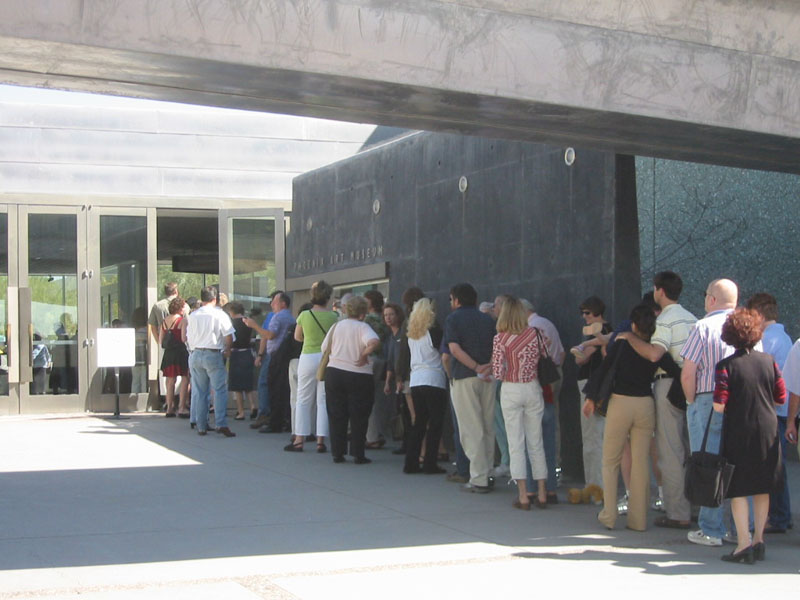
We toured the museum with Jim Ballinger, director for 20 years—and boyhood friend of Jay Gates! We also viewed current exhibitions of Sri Lankan art and Trompe l'Oeil fashions. As long-time director, Jim shared fascinating accounts of several of the works and their acquisition, as well as unusual dangers he encountered.
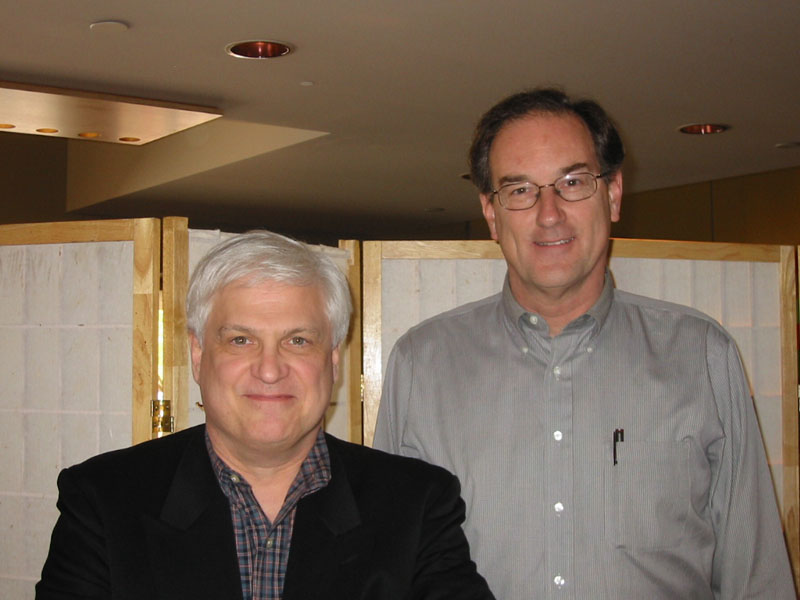
After lunch we had the opportunity to view the museum's magnificent mounting of the Phillips' works. Fortunately, our "Director's Comp" passes got us to the head of the line.
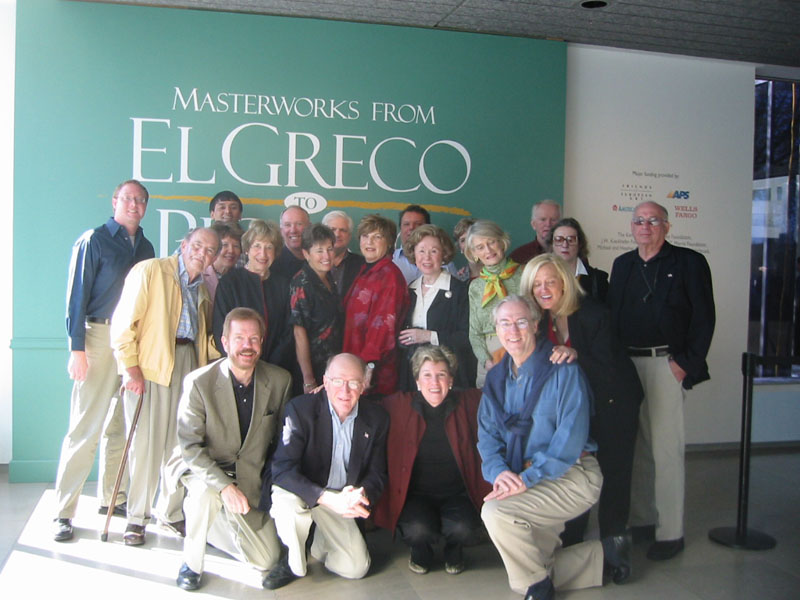
That evening we toured the Heard Museum, which highlights Native American history, cultures, and art. Among the exhibits is a collection of hundreds of katsina dolls donated by Barry Goldwater. (The different spelling is a closer equivalent to Hopi pronunciation.)

Dinner was served in the courtyard. In fact, almost all our meals were outside—Phoenix was very pleasant in early March.

You may have noticed the striking napkin rings; of Native American construction, they were whisked away as soon as we removed the napkins.

After dinner, we were fortunate
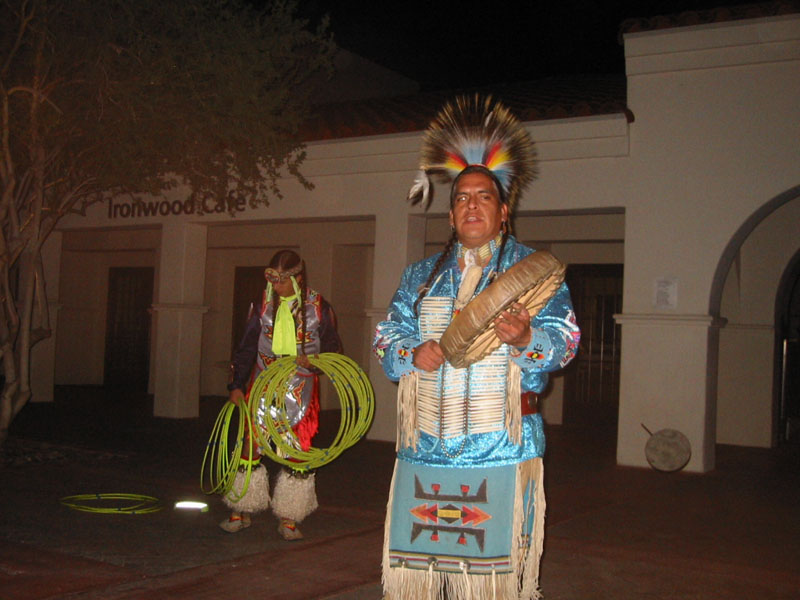
to experience a Native American
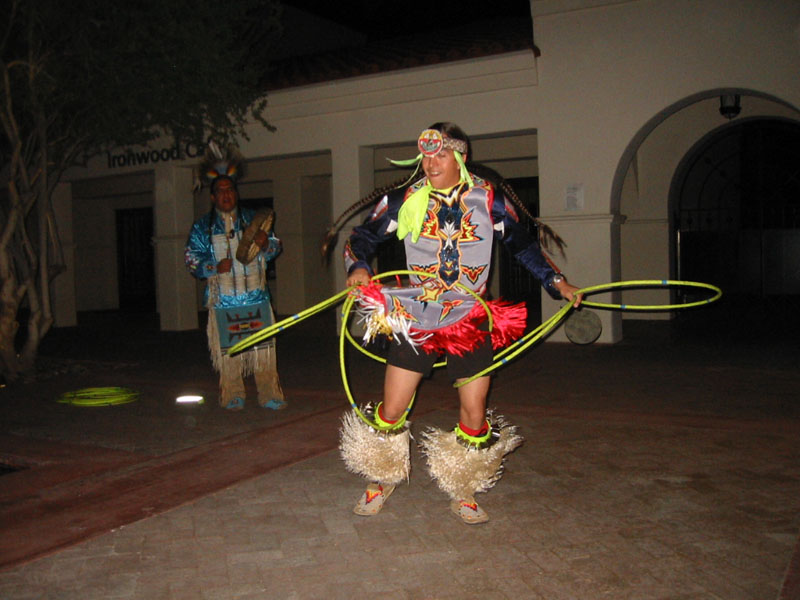
hoop dance,

an amazing demonstration of

dexterity and stamina.
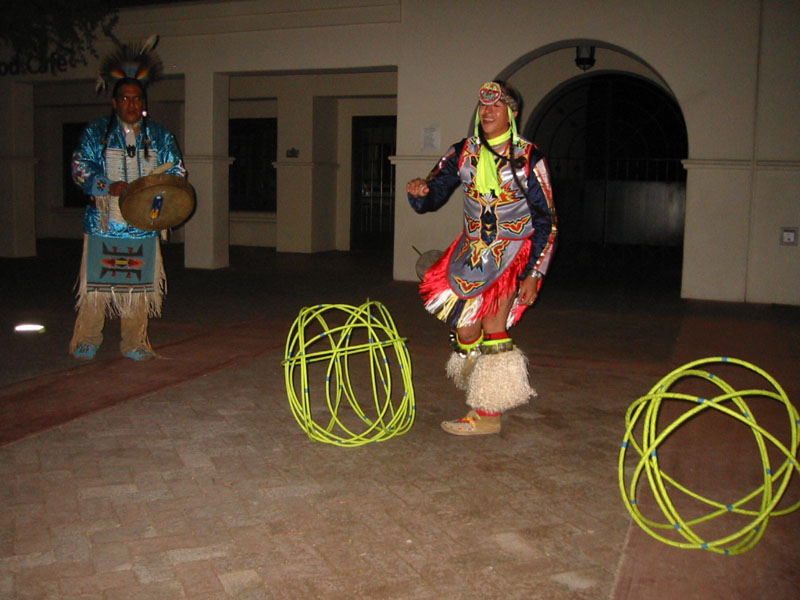
Departing the Heard, we were reminded of the Native American's close ties to nature.
